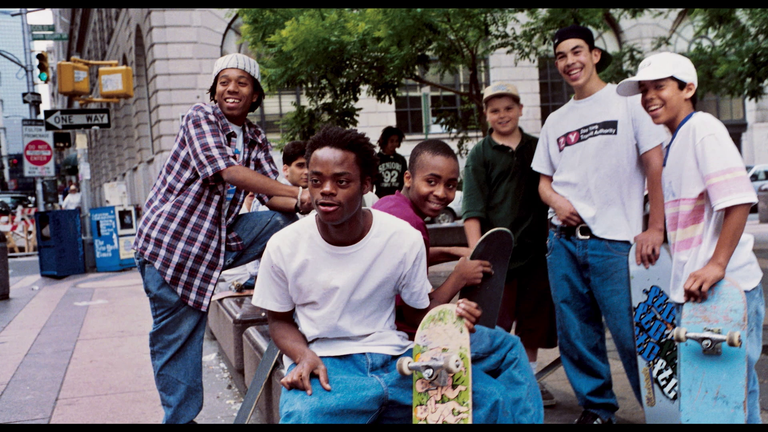
A dual title of Kids and When We Were Kids appears to be the case here.
The Kids or We Were Once Kids is a documentary directed by Eddie Martin. The subject matter is the film Kids (1995) and he is attempting to shed light on the cult indie film that made a big splash in the 1990's.

This sums up the film and is what I remember fondly about it. Washington Square Park, NYC in its full glory and is a character all in itself.
The documentary contains many of the secondary actors of the film and their stories. Not everyone is here to tell the tale and that's not because they declined. We have interviews years later with those often secondary characters and those on the periphery telling their experiences. We get a quick rundown of New York city starting in the in the 1970's up until the film started being made in the mid 1990's. Handheld camera footage litters the documentary mostly showing the lives of the kids at the time. Interspersed are mainstream media clips, photos and newspaper clippings.
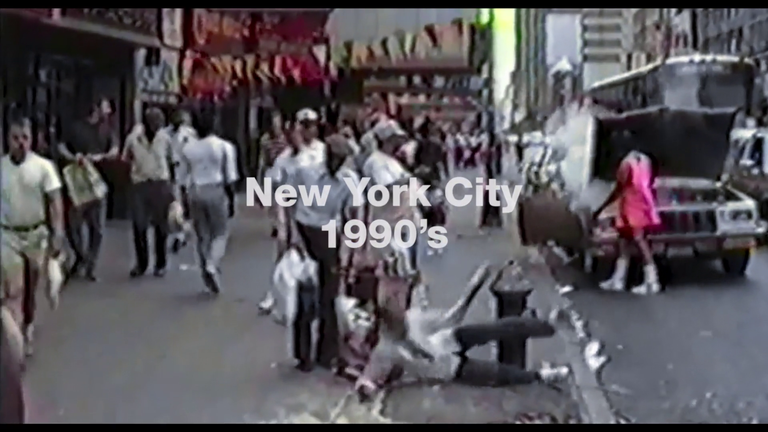
Not a great decade for NYC.
Kids was about a group of kids living in New York City at the time. That film was written by Harmony Korine and directed by Larry Clark, two individuals who make films that always capture the imagination and push the boundaries. This would be their first major work and it also happened to explode onto the scene. The world took notice and was captivated. They never expected the film to catch on like it did. The film was huge news at the time as it was a glimpse at youth culture rarely seen unless you were there.
Drinking, sex, drugs and violence were all common occurrences during a standard day. Although this is a work of fiction it's shot in a similar manor to a documentary and often mistaken as cinema verite. In reality many of the kids within the film lived this lifestyle.
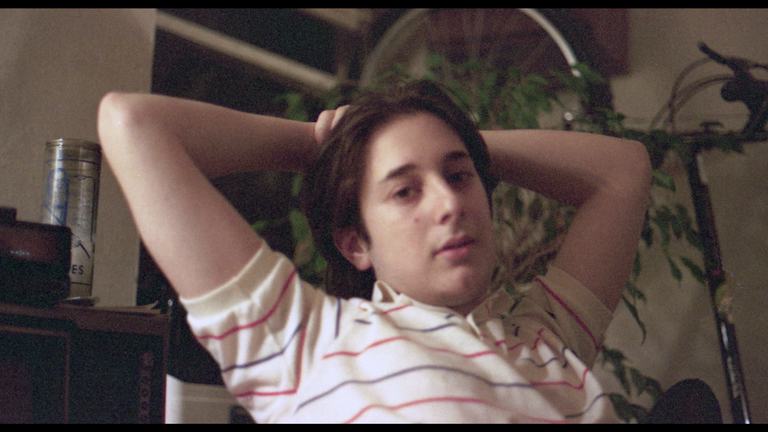
A very young Harmony Korine has writing duties at 19.
Harmony Korine was a mere 19 years old when he met with Larry Clark who was in his late forties. An odd pairing that worked at the time. Korine like most of the kids were big into skateboarding and many were trying to go pro and this is why there is a large focus on the sport during the film. The story was apparently given to Korine by Clark and he fleshed out the screenplay into what we have.
They put out a open casting call for kids from the neighborhood and many appeared. Most had no acting experience at all and it was interesting to see on the flyers that they wanted those that were not a member of SAG (Screen Actors Guild).
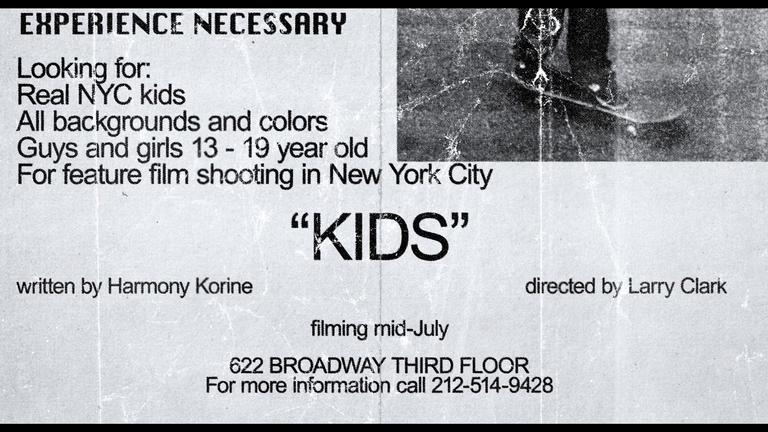
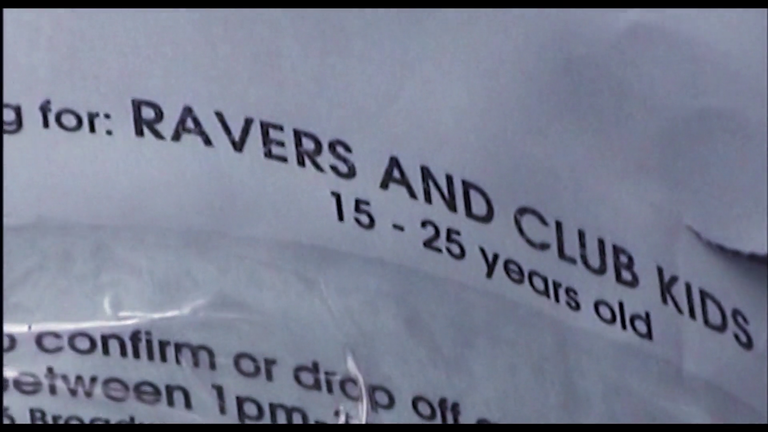
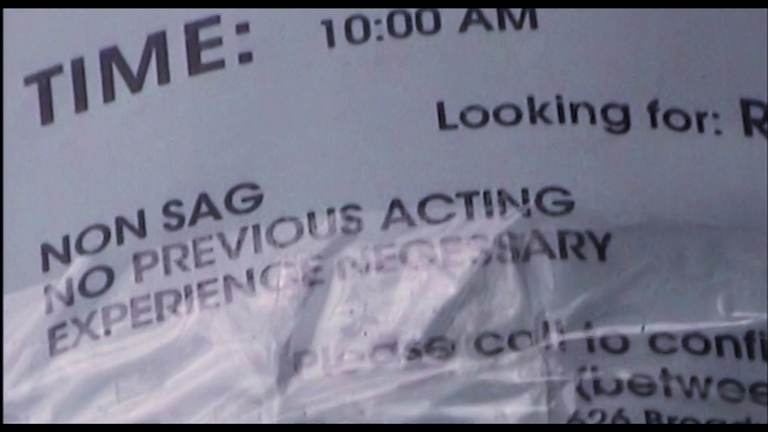
For the kids that were chosen this was a huge point in their lives. The ages of those found within the film ranged from those as young as 13 up to their early twenties. Most of these kids were living on the fringe to begin with. Parents that were absent, abusive, drug addicts or in prison were a common occurrence. They were left mostly on their on to fend for themselves. One of the major actors was in fact homeless at the time couch surfing as the days and months rolled by.
This film is a once in a lifetime opportunity to make. The stars aligned and what was caught on film was magic. Real slice of life in a subsection of youth culture that few have seen before unless they lived it.
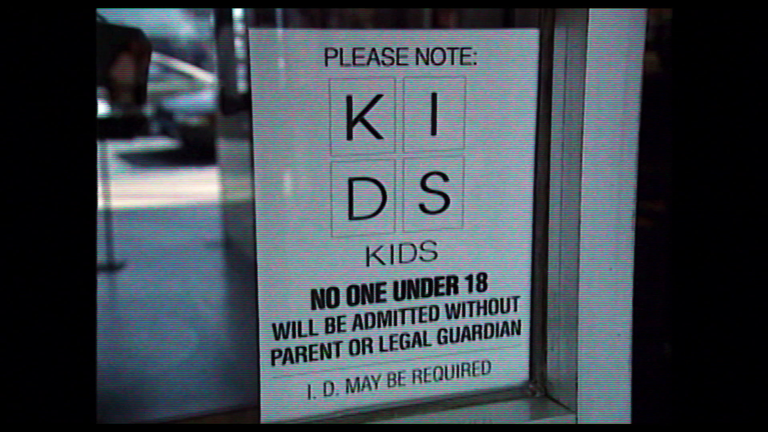
There is a reason for this rating.
Once released it was a phenomena. Mainstream press, newspaper and magazine articles were all buzzing about the film. Was it real? Was it fake? The obvious questions also being put out there, where are the parents during all this?
This film had some unknowns that eventually became big hitters in Hollywood. Chloë Sevigny, Rosario Dawson, Leo Fitzpatrick. The breakout role was that of Casper (Justin Pierce) with his frenetic energy and obvious talent. Who knew he was homeless at the time? A true loss for the film world when he took his own life in 2000.
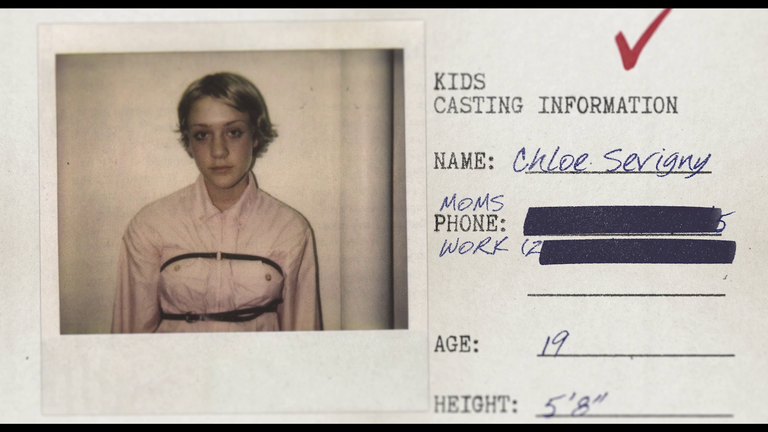
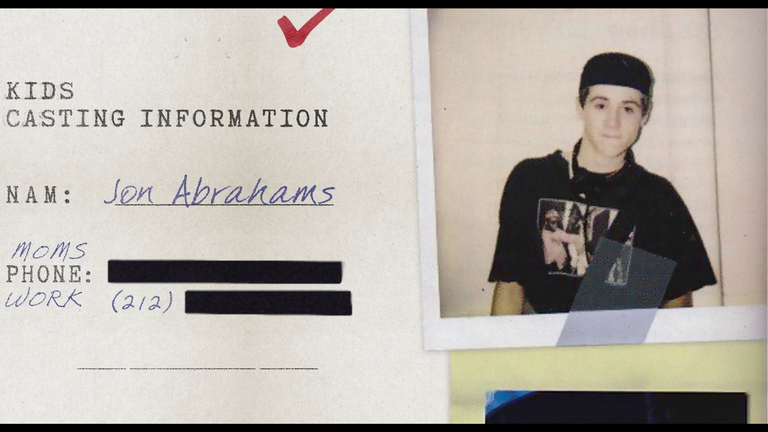
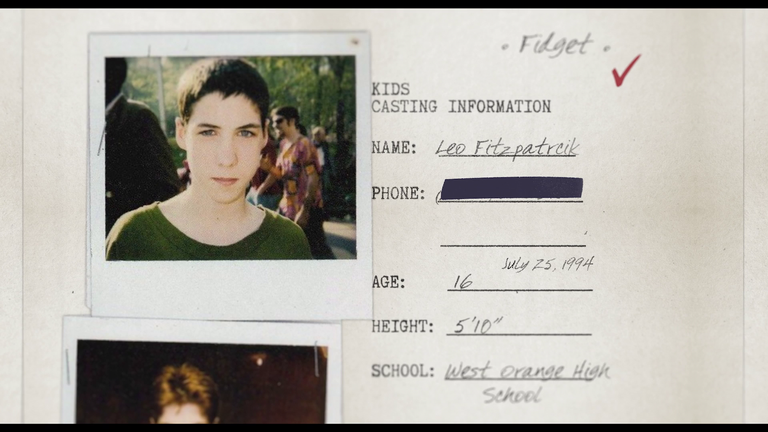
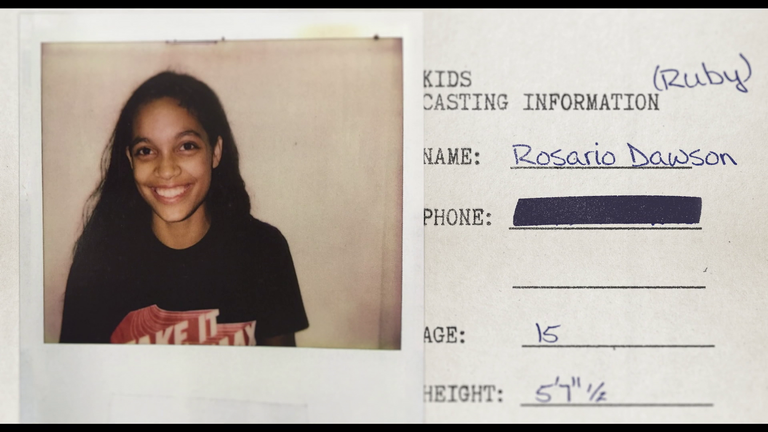
This documentary brings back a select few of the original cast but not those previous mentioned. I was hoping to see the formerly mentioned actors and their viewpoints behind the scenes on this evocative film. After finishing the documentary I now understand why certain key figures did not want to be associated with this film.

I feel like this is a 'To Catch a Predator' moment chosen for maximum effect.
Instead the documentary makers start to make their intentions clear. Larry Clark and Harmony Korine are painted as the villains in this piece. There's a lot of behavior that will never be discussed on film about the making of this film. They touch a bit on it with different people and never delve too deeply.
Larry Clark has always had controversy surrounding him and we haven't even started to delve into his other body of work. As the adult in the situation he was often the one providing drugs, alcohol and anything else that was needed to make the film work. One person actually asked why this 60 year old guy is hanging around with these teens, Clark was in his late forties at the time. He stuck out like a sore thumb and accusations about his behavior has always been there.
Harmony Korine is also taken on by the filmmakers. Painted as a kid, then 19 that took advantage of the situation. Once the film started to blow up the dynamics between him and the group changed. Many think he went "Hollywood" and forgot about them. I'm sure there's some truth to this as people do change once fame and fortune come knocking.

Justin Pierce 1975-2000. What a terrible loss.
The doc delves further into Justin Pierce which is fascinating. A truly troubled kid that hit it big and was one of the first actors to move to Hollywood. He was doing well and getting steady acting work. His struggles were a big focus of the film and many believe he funneled all this pain into his acting. Surprisingly, there is a big wow moment regarding him and his family near the end of the documentary.
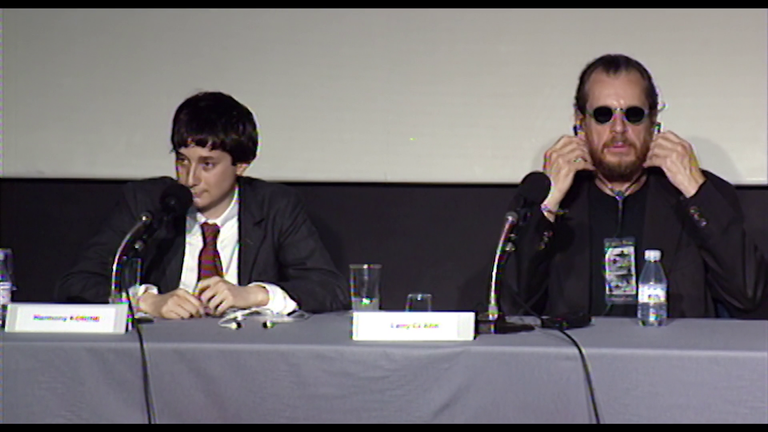
Attempting to field questions at Cannes and not succeeding
There's some interesting footage with Harmony Korine and Larry Clark at Cannes doing a press junket on the film. They both look like fish out of water on this one and come off badly. Reporter after reporter are asking about the age of the kids. Is sex and violence the only thing they kids think about? What about the drug scenes? One actually asks about the purpose of the film.
Clark doesn't know what to say and acts aloof. He could have explained his vision more clearly as these type of questions are asked on almost all his films. Instead, he really looses face here. I can almost see this documentary maker smiling in glee with this type of footage.
Thankfully this doc didn't focus much on the Weinstein's that ended up with the distribution of film. This film was pushed heavily due to the help Harvey Weinstein who was a major player in Hollywood at the time.
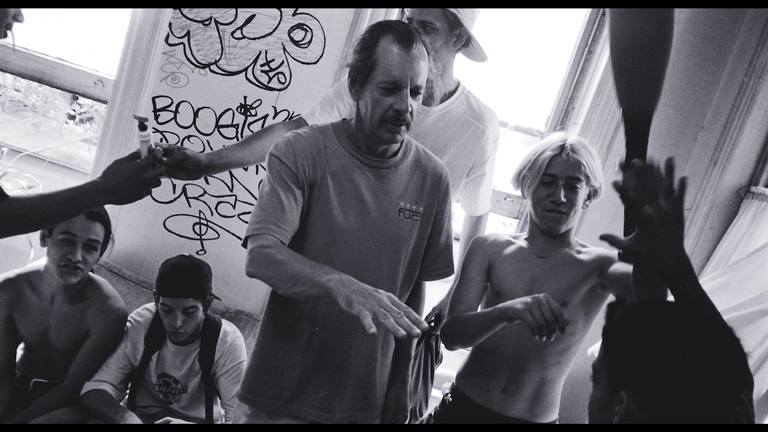
Larry Clark capturing lightning in a bottle. I wonder if he knew it at the time?
They made it clear that both Harmony Korine and Larry Clark had declined to participate. There's even a small scene where one of the former actors called up Clark where he says he will call them back. Really? Completely unnecessary, leave the title card and move on. This only makes you as the filmmaker look petty.
I do believe these kids were used for the production of this film. Many were paid $1000 and I'm sure signed away their release rights in the process. This is no surprise and this type of behavior is common. Most were living day to day trying to score or eat a single meal a day. They show pictures of themselves being sold by Clark at different galleries and they certainly have received no further residuals after the fact. This is part of the package and although it's not ideal. It is what it is.
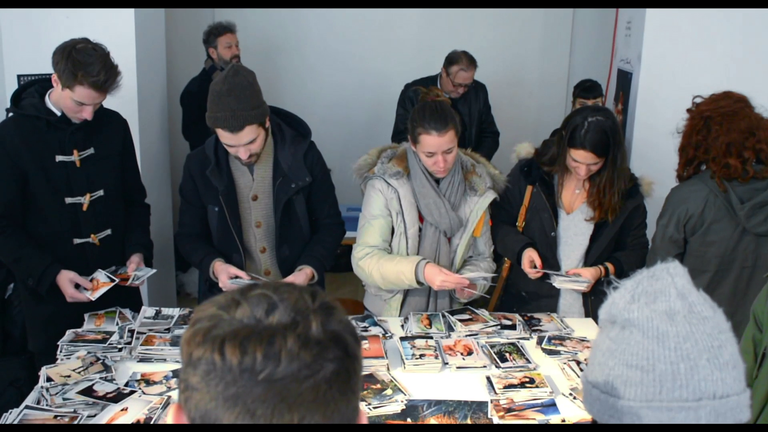
Sorting through the past selling off stills from the film. The point was made here and everyone sees it.
Some were able to spin off the initial dose of fame into successful careers and others have learned from the experience. There are a few that consider this the beginning of the end.
However you look at it this film is a time capsule of a specific sub-culture at a specific time. There are many questions posed about ourselves, the filmmakers and society. As usual, nothing is clear cut and the shifting line of society is exposed for anyone to see. I do believe it accomplished its goals and is still a thought provoking film that people should watch.
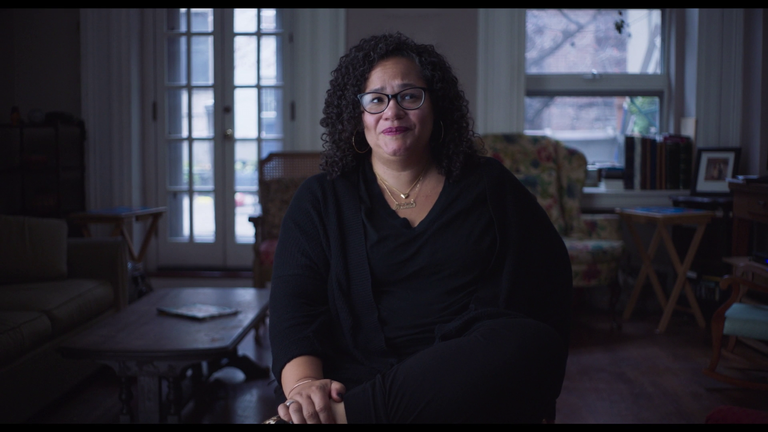
The point was made loud and clear. I don't know if there was ever going to be a true happy ending to all of this. Everyone will gain something from the original film.
The documentary adds further background context that is greatly appreciated. The bias is strong and should have been checked at the door. This is a documentary after all and sadly falls head first into this trap. Other than this, this is worth a watch especially for those that know the film and always wondered…
What happened to those kids?
Thanks for the read 🙂
All media captured by myself from the original source.
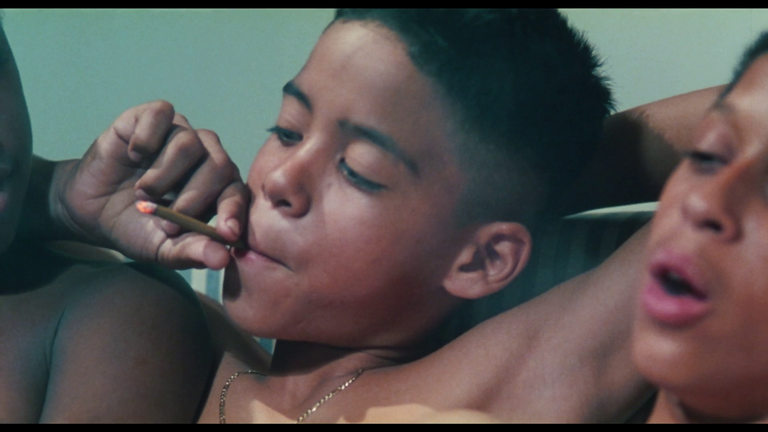
Is watching a group kids smoke a blunt as controversial as it once was? That's up for you to decide.
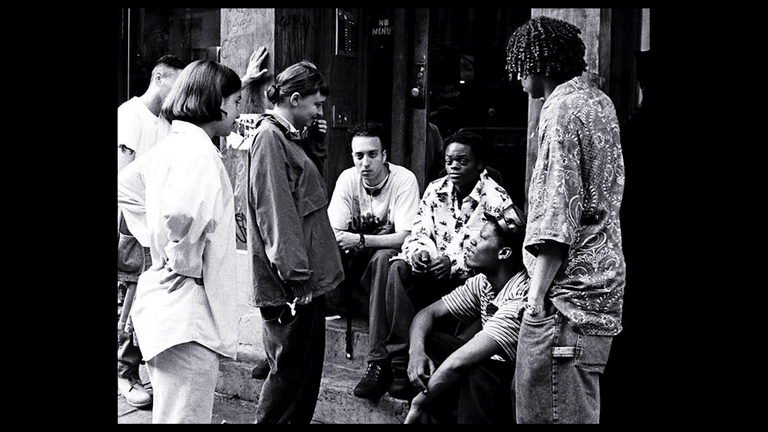
A slice of life in NYC in the 1990s.
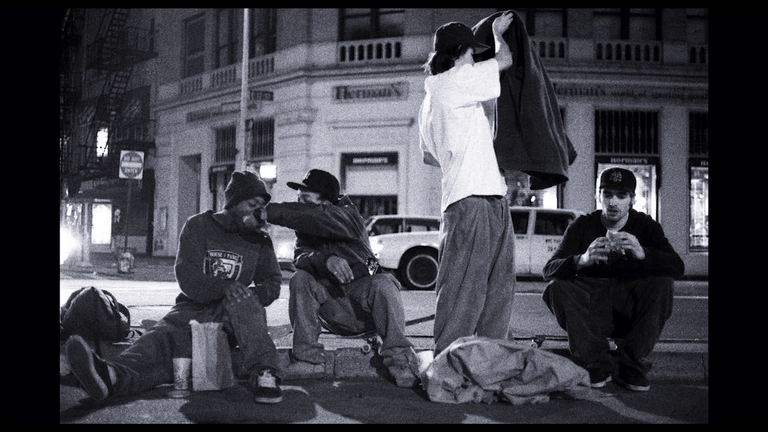
Most of these kids were struggling at the time. In these cases you get to choose your family and the choices are always better than what you're born into.
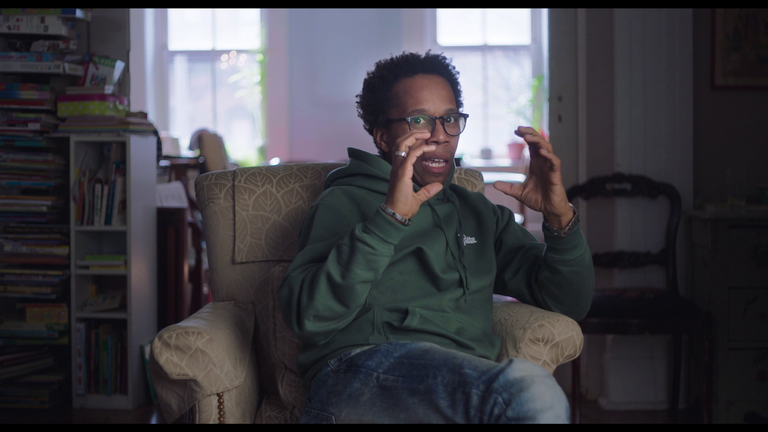
One of the more prolific story tellers in this documentary. Hamilton Harris tells his experiences on the film. How crazy is it to have your full real life name be the name of your character? Surreal.
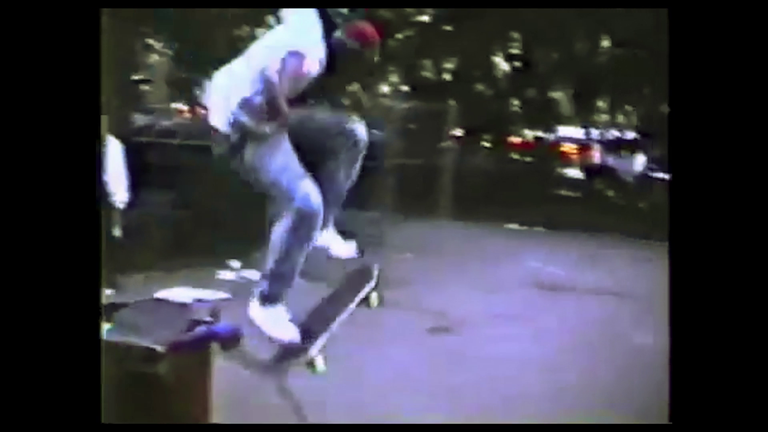
Lots of skateboarding footage permeates this documentary.
